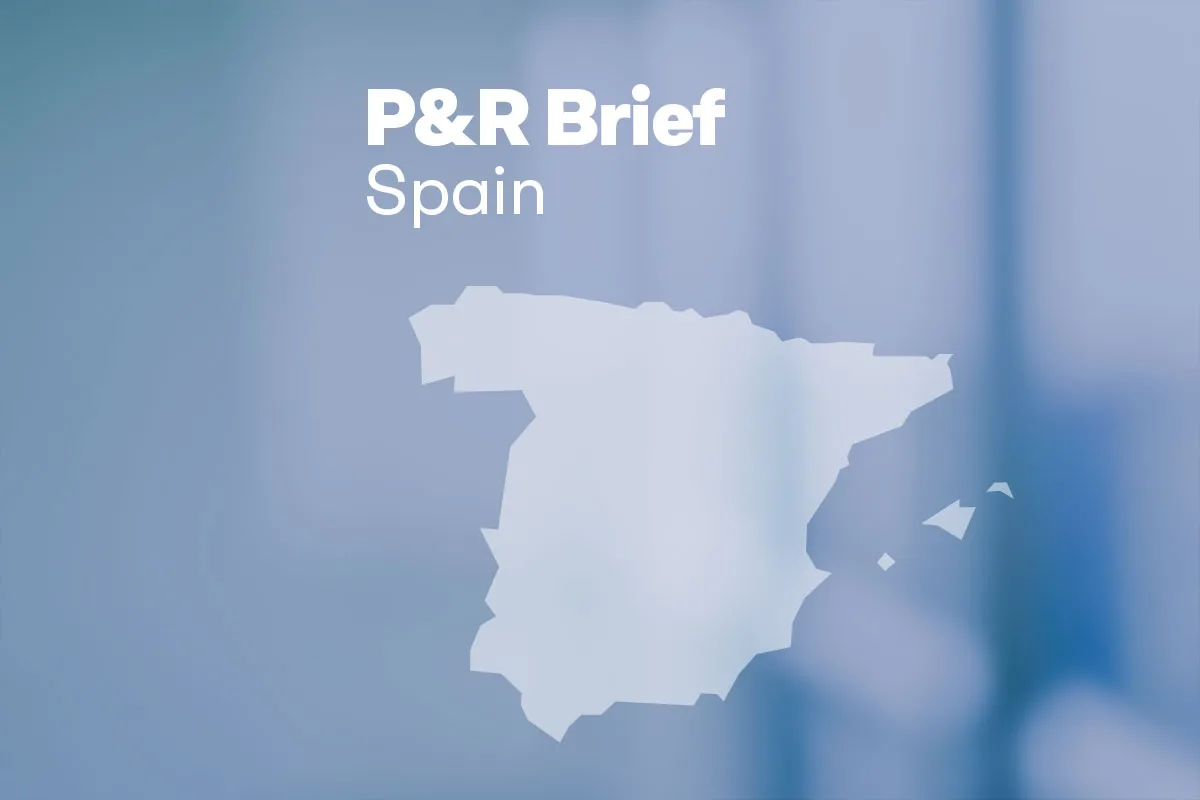Pharmaco-economic analyses are gaining momentum in Spain, but what are the potential implications? In the recent revisions issued by the Spanish health authorities, the inclusion of an economic analysis in the Therapeutic Positioning Reports (IPTs) is required leading to a more comprehensive evaluation of the therapy prior to price and reimbursement (P&R) negotiations. Our experts Ana Mozetic, Patricia Laviña, Carlos Ardévol, and Marta Fernández have analyzed how these evaluations are being carried out during this initial phase to identify current trends and anticipate potential implications for manufacturers.
In Spain, as part of the P&R process and negotiations, pharmaceuticals are evaluated by creating an IPT, which is used to understand the product’s value and positioning. The IPT Consolidation Plan, published in December 2020, updates IPT development starting in January 2021 by establishing a new drug evaluation network (REvalMed) and introducing economic evaluations as an additional dimension to clinical evaluations.
How is the economic dimension reflected in IPTs?
Since the first IPT with an economic evaluation was published in November 2021 for Talzenna (talazoparib) as a treatment for breast cancer, a total of 14 products have been evaluated following this new methodology (as of October 2022).
In Spain, there is no standardized approach in terms of which economic analyses are included in IPTs. However, based on what Simon-Kucher's analyses of these economic evaluations show, the choice of economic analysis may be driven by the clinical evidence of the product:
- Half of the IPTs (7) include a cost-effectiveness analysis. More specifically, they include a cost-utility analysis to facilitate comparison between treatment alternatives
- The rest of the IPTs (7) were evaluated through a cost-comparison analysis. This type of analysis is normally driven by absence of comparative trials, methodological differences between trials, absence of direct comparisons in the pivotal trial, or availability of only immature data from phase II trials.
- All IPTs include a budget impact analysis, which remains a key factor influencing P&R decisions in Spain.
How are these additional economic analyses conducted?
There is a lack of clear guidance regarding the main variables to consider for economic analyses in IPTs. The selected comparator, time frame, and estimated price of the drug are the most relevant parameters that manufacturers need to consider, since they are used by the ministry of health for the calculations.
- The economic comparator should reflect the current standard of care considering the clinical practice and the available evidence, so it could be either the clinical trial comparator, alternatives currently used in the clinical practice (i.e., supportive care, standard of care), or even a placebo if no treatment is available
- The time frame for the cost-utility analysis is established while considering the duration and follow-up phases of phase III or II pivotal trials (if available) and their results
- The estimated price of the drug is set bearing in mind that the analyzed drugs have not yet received a P&R decision within the specific indication. Therefore, depending on the situation, there are two main approaches to establish the price considered:
- If the drug is already funded in other indications, the ex-manufacturer list price (PVL notificado) is normally used for the economic evaluation
- However, if it is a new drug, different proxies have been observed (i.e., estimated discount or premium versus the price of a comparator, parity, or discount compared to the price of the drug in another country like the US, UK, etc.)
Depending on the approach selected, the estimated economic impact can differ significantly. If the price selected is far from the potentially achievable price, then the result can be unrealistic, biasing the final funding decision.
Additionally, several scenarios in terms of different comparators, treatment lines, or wastage alternatives can be included.
How are results being interpreted?
To establish if a drug is cost-effective, the MoH utilizes a range between 25,000 and 60,000 €/QALY. In some cases, like in Tecentriq (atezolizumab) and Tukysa (tucatinib), this range was adjusted to 30,000 – 40,000 €/QALY as REvalMed considered these ranges to be normally used in other countries.
If the result of the cost-effectiveness analysis is far above the upper bound of that range, the IPT economic conclusions normally result in a negative funding decision, as seen in at least the four oncology cases of Talzenna (talazoparib), Opdivo (nivolumab), Tecartus (brexucabtagene autoleucel), and Tukysa (tucatinib) due to their high budget impact and/or lack of cost-effectiveness.
What are the potential implications of these analyses?
There are still uncertainties regarding the economic evaluation of the IPTs.
- The methodology and documentation are not standardized, increasing the variability in the development of complex economic evaluations, particularly in key points such as the comparator and the estimated price used for the calculations
- The clinical evidence is sometimes unclear, since in some cases, only phase II data is available, increasing the uncertainty in the clinical value of the product and making it difficult to estimate an acceptable price for the product being studied
- The potential scope, long-term applicability, and impact of these economic evaluations are still uncertain given the initial phase of this new IPT approach and the lack of clear guidance and standardization previously mentioned. For example, in cases where the cost-effectiveness is far above the established ranges, the impact of the evaluation will be unclear, since the final price proposed by the manufacturer could be lower than the estimated price used for the calculations
- Although the IPT publication timings have improved since the new Consolidation Plan was applied, the delays in the IPTs’ development also increase uncertainty by delaying the establishment of the process
The limited impact at present is demonstrated by the small share of IPTs with an economic evaluation available in 2022, equivalent to just 12 percent of all IPTs1 (105).
How can manufacturers anticipate potential hurdles?
There are still actions manufacturers can take proactively to have a positive impact on the economic conclusion of IPTs:
- Presenting a cost-effectiveness analysis developed by the manufacturer with appropriate evidence could help to mitigate the impact, since the ministry of health is expected to accept that analysis and will only comment on the potential limitations (e.g., see Ontozry IPT)
- Referencing economic evaluations by health authorities in other countries (i.e., the NICE in the UK or the TLV in Sweden) could also help to support the evidence of the analysis
- Expanding knowledge of pharmaco-economy will allow manufacturers to anticipate key parameters that can impact economic analyses and to prepare arguments to face potential objections that the ministry of health may have about these analyses
Development of additional IPTs including economic analyses will contribute to more conclusive insights and a better understanding of the impact of these analyses in the P&R process and decisions.
(1) In the cost comparison analysis, the total treatment cost vs. the alternatives is assessed to identify the less costly treatment and minimize costs within the indication.










